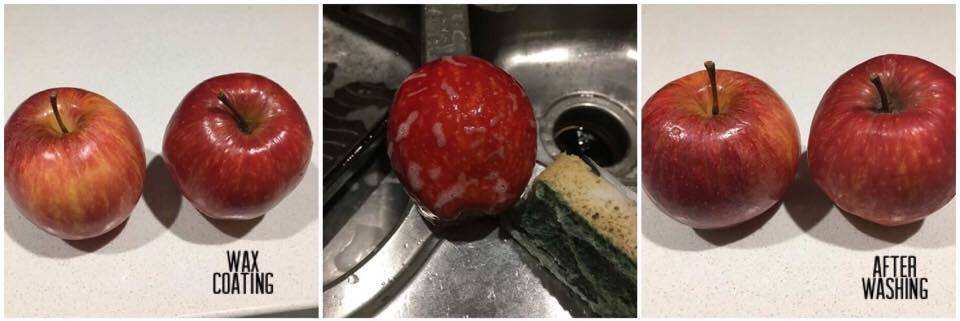One of the most important ways we can stay healthy is by increasing our vegetable intake. This helps us to provide our bodies with the trace nutrients, vitamins and minerals that our body requires to run properly.
As a parent, I am always looking at ways to provide our family with the nutrients we need and reducing all of the toxic chemicals that come into our lives. One way we try to do that is by reducing the amounts of pesticides on our food.
A simple way we can reduce our intake of those nasty pesticides is buying organic, or growing our own veggies. If neither of these are a good option I’ve shared a list of the foods that we need to take extra care with when preparing for our family and those that are safe from many pesticides.
Every year the “Environmental Working Group” goes through the records of the USDA and the FDA to discover what the pesticide levels of certain foods are. The EWG goes through over 35,000 samples of tested food that is in its “prepared ” state, meaning that the food was washed, peeled if necessary and prepared to be eaten.
This guide makes it easy to determine which foods you should purchase organic in order to make choices that will cut down on the amount of pesticides your family consumes every year. It’s very important that we get the 5 -11 servings of fruits and vegetables in us every day. Don’t let the thought of ingesting too many pesticide stop you from consuming these products because they are vital for health.
Here’s your 2017 “Dirty Dozen” List that you should preferably look for organic options when available:
- Strawberries
- Spinach
- Nectarines
- Apples
- Peaches
- Pears
- Cherries
- Grapes
- Celery
- Tomatos
- Capsicum/ Sweet bell peppers
- Potatoes
If organic varieties are unavailable or too expensive there are a couple of things we can do to try and remove as much of the pesticide off of our fruits and veggies as we can. Washing them with soap and water is the best way to remove the majority of the pesticide residue. If just rinsing them with water was effective, the pesticide would run off every time it rained while the farmer was growing them. If you add a petroleum to the pesticide it will “stick” to the product better even through a rainstorm, so washing them with water alone is not an effective plan.
You will notice that after you wash them, they will have a different texture and I’ve also noticed that they don’t last as long when you wash them with soap and water. Some of the petroleum and wax acts like a sealant keeping them fresher for longer, so wash them right before eating. If there is wax on the produce, you may want to peel the skin off. To find out if there is wax you can scratch the surface with your fingernail and you will notice a waxy substance under your fingernail. Wax is mainly used on apples, cucumbers, tomatoes, eggplant and pears.

Another technique we use for fruits and veggies that we want to store in the fridge, especially if we are using them for school lunches is to soak them in a solution of 1 part vinegar to 4 parts water for 20 minutes. Rinse after 20 minutes and then dry. I have noticed that strawberries, blueberries and grapes work well with this method, and they seem to last longer in the fridge using this technique. This also helps to remove any bacteria that may be on the fruits and vegetables.
Here is a list of EWG’s “Clean Fifteen : These are typically safer to eat because they have been found to carry the least amount of pesticide.
- Sweet Corn (possible GMO)
- Avocado
- Pineapple
- Cabbage
- Onion
- Frozen sweet peas
- Papaya (possible GMO)
- Asparagus
- Mango
- Eggplant
- Honeydew melon
- Kiwi
- Cantaloupe/ rock melon
- Cauliflower
- Grapefruit.
Happy eating!
Dr Brian Peterson
